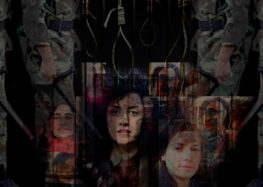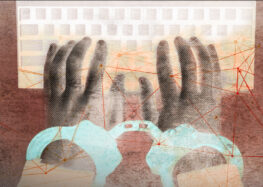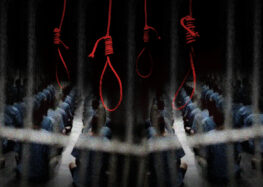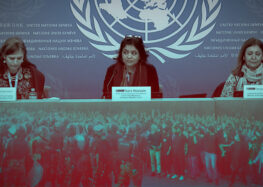Paper Close to Revolutionary Guards Doctors Ashton Photo to Erase Image of Torture Victim’s Mother
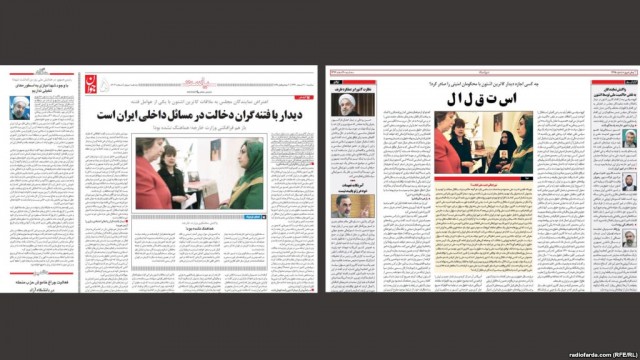
Javan Newspaper (left) erased an image of the mother of prison torture victim Sattar Beheshti from the March 8 photo of EU foreign policy chief Catherine Ashton visiting with Iranian activists in Tehran.
Almost immediately after EU foreign policy chief Catherine Ashton met with a group of activists in Tehran, Iranian authorities unleashed a barrage of angry remarks and insults about her visit.
Ali Larijani, the Speaker of the Iranian Parliament, said during an open session of the Parliament today that Ashton’s “act was very ugly,” and that her visit with a so-called Sedition convict “was a stealthy visit that was beneath the Europeans.” Iranian government officials routinely refer to the 2009 post-election protests as “the 2009 Sedition.”
Ayatollah Sadegh Larijani, Head of the Iranian Judiciary, said during a regular meeting with high-ranking judicial officials that Ashton’s “visit with Seditionists was a smirk at the regime.” Sadegh Larijani threatened, “If such a trend continues, the Judiciary will step in.”
Photographs of the visit at the Austrian Embassy in Tehran surfaced on Sunday, March 9, showing Catherine Ashton next to human rights defender and former political prisoner Narges Mohammadi and Gohar Eshghi, the mother of Sattar Beheshti, a blogger who died in custody of Iran’s cyber police inside a police detention center.
According to the Guardian, Ashton said on Sunday, “The main purpose of the visit was to, as EU high representative, have a chance to talk to Iran about the potential for the relationship that we can have in the future.” She continued, “Not surprisingly, there was a big focus on human rights: I met with women activists on International Women’s Day and talked to them about the situation that women find themselves in and some of the work that these women are engaged in, from journalists to those involved with Afghan refugees, people working across the spectrum of civil society and the importance of civil society.”
Photographs of the visit went viral on the Internet, but the conservative newspaper Javan, a publication close to the IRGC, altered the photo, erasing Gohar Eshghi from the scene, and captioning the article as “Visiting with Seditionists is interfering in Iran’s domestic issues.”
Images of Gohar Eshghi holding her son’s photograph have become familiar to many ever since news of Sattar Beheshti’s death emerged in November 2012. Gohar Eshghi has fiercely demanded justice in the case of her son’s death under torture, and has been dissatisfied with the Iranian Judiciary’s decision to call the cause of death “quasi murder.”
The case of Sattar Beheshti is one of the most egregious examples of the impunity of Iranian government agents and officials for their violence against members of the Iranian civil society.
Iran’s conservative media and particularly media related to the IRGC and other security organizations, who have been responsible for the suppression of Iranian civil society, have repeatedly omitted coverage about his case, and about any cases of suspects tortured during interrogations. Even so, erasing the image of the grieving mother during the visit with Catherine Ashton is a new low for Iranian media.

